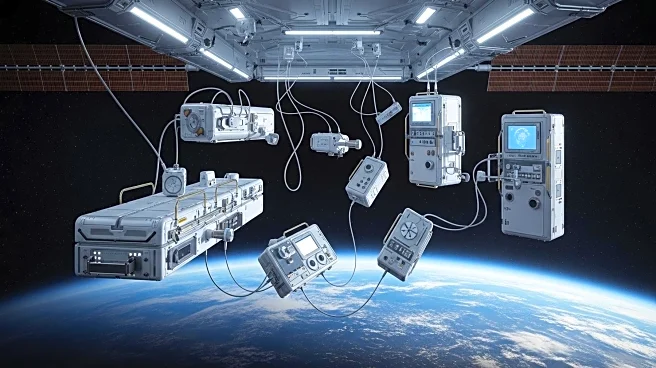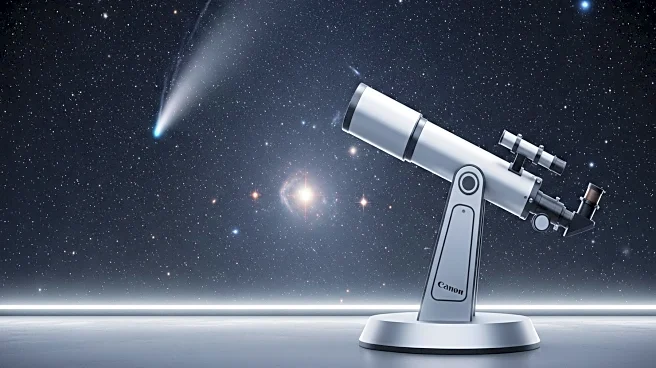What's Happening?
Researchers have proposed a novel telescope design that could significantly enhance the search for Earth-like planets. The design features a rectangular mirror, measuring one by 20 meters, which could separate the faint glow of a planet from the blinding light of its star. This approach aims to overcome the limitations of current telescopes, such as the James Webb Space Telescope, which is only 6.5 meters in diameter. The rectangular design would operate at infrared wavelengths similar to JWST, allowing it to detect planets with liquid water around sun-like stars within 30 light-years. The researchers suggest that this telescope could identify half of all existing Earth-like planets orbiting sun-like stars within three years, potentially uncovering around 30 promising planets for further study.
Why It's Important?
The development of a telescope capable of identifying Earth-like planets is crucial for advancing our understanding of extraterrestrial life. Discovering planets with conditions similar to Earth could provide insights into the potential for life beyond our solar system. This research could have significant implications for space exploration and the search for habitable planets. By identifying planets with atmospheres that suggest the presence of life, such as oxygen formed through photosynthesis, scientists could prioritize targets for future space missions. The ability to detect and study these planets could lead to breakthroughs in astrobiology and expand our knowledge of the universe.
What's Next?
The proposed telescope design requires further engineering and optimization to ensure its capabilities. Researchers will need to address technical challenges and refine the design before it can be implemented. If successful, the telescope could pave the way for dispatching probes to the most promising planets, potentially providing images of their surfaces. This advancement could lead to a new era in the search for Earth 2.0, offering a straightforward path to identifying planets that may harbor life. The scientific community will likely monitor developments closely, as this design could revolutionize the field of exoplanet discovery.
Beyond the Headlines
The implications of discovering Earth-like planets extend beyond scientific curiosity. Ethical and philosophical questions about humanity's place in the universe may arise, as well as considerations about the potential for future colonization or interaction with extraterrestrial life. The search for habitable planets also highlights the importance of international collaboration in space exploration, as such endeavors require significant resources and expertise. Additionally, advancements in telescope technology could drive innovation in other fields, such as optics and materials science.











